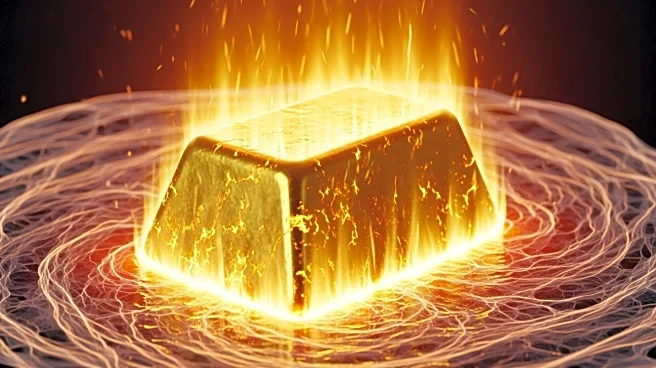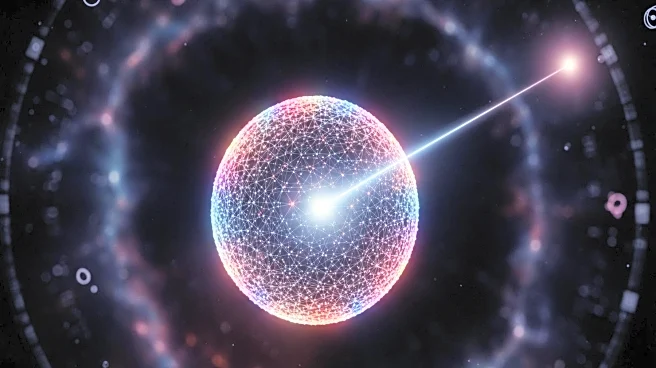What's Happening?
An international team of physicists has successfully superheated gold to 19,000 Kelvin, equivalent to 33,740°F, without causing it to melt. This groundbreaking experiment was conducted using ultra-fast laser heating and precise X-ray probes to measure the temperature in real-time. The study, led by Thomas G. White from the University of Nevada, Reno, challenges the long-held belief that solids cannot be heated beyond three times their melting point without melting. The team managed to keep the gold crystalline for a brief period, allowing them to record atomic movements and temperatures. This research contributes to the understanding of warm dense matter, a high-energy state relevant to planetary interiors and fusion targets.
Why It's Important?
The ability to superheat gold without melting it has significant implications for various scientific fields. Accurate temperature measurements in warm dense matter are crucial for planetary physics and fusion research, as they help refine models of heat movement through planetary cores and mantles. This research also opens new possibilities for materials science, suggesting that rapid heating could enhance the strength and heat capacity of other solids in extreme environments. The findings challenge existing assumptions about melting and stability, providing a more precise tool for testing theoretical calculations in high-energy states.
What's Next?
Future research will likely explore different elements, thicker targets, and varied time delays to map the limits of superheating and understand when crystalline order fails. These experiments will test the practical boundaries of superheating and its applicability to other materials. The insights gained could lead to advancements in fusion technology and planetary modeling, as well as a reevaluation of material properties under extreme conditions.












